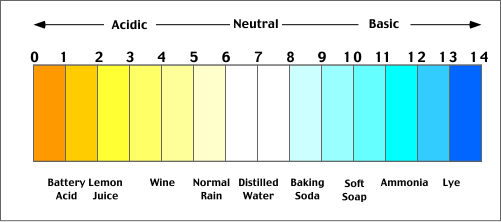During the foundation phase of a construction project, concrete forms are built, concrete is poured, damp proofing is applied, site drainage is installed and the newly formed foundation work is backfilled with soil. The main risk associated with this phase of construction has to do with the potential for water that has come into contact with wet concrete to enter into the storm water system, which can happen in a few different ways. For example, when concrete trucks are washed out onto the road, when water runs over the freshly poured or raw concrete, or when cured concrete is cut with a saw and water is used to minimize dust, creating saw cut slurry instead. All of these practices can allow for concrete contaminated water to potentially enter into adjacent watercourses.
Concrete wash water is highly alkaline (has a high pH) and can contain heavy metals. Elevated pH and heavy metals can both be toxic to fish and other aquatic organisms. Concrete wash water cannot be allowed to flow into the storm water system, where it can damage or kill aquatic organisms. Freshwater aquatic organisms survive within a relatively small pH range of between 6.5-9 and when concrete wash water enters into a watercourse, the pH of the water has the potential to rise above tolerable limits.
Concrete wash water has a pH of 11 -12. When precipitation is allowed to come into contact with uncured concrete, or when concrete trucks and other equipment is washed into the storm water system, the resultant runoff can raise the pH of the receiving environment significantly.
Concrete forms are typically built new out of plywood and dimensional wood or can be rented and reused on multiple sites. After their use, new forms can either be recycled and the wood reused to sheath the new structure. In some cases, forms are only used once and are then thrown out. When forms are not reused or recycled to sheath the new structure, these forms can be the source of large volumes of construction waste.
After concrete forms have been removed, the foundation wall is damp proofed. Damp proofing is done using a petroleum based product. There is potential for this product to enter the storm water system if care is not taken during its application, however, once dry damp proofing creates a seal over the concrete which in turn reduces the risk of concrete wash water raising the pH of nearby water courses.
Once damp proofing is finished, perimeter drainage works take place. This work involves installing drain tile which is connected to a sump. After the drain tile has been installed and connected to the sump, the sump is then connected to the storm water system. This connection is typically done at the property line by the municipality. Prior to the connecting being made, the sump typically discharges site water onto the road in order to keep the excavation site clear of all accumulated water.
Once both damp proofing and drainage works are complete, fill is placed around the newly built and poured foundation. At this phase, basic sediment and erosion control measures must be followed to ensure that the exposed soil is not allowed to wash into the storm water system. In some locations, fill must be brought in because the soil excavated onsite is not suitable. Engineered fill is required in order to allow for proper drainage and site settling. Fill must be able to withstand heavy machine use while still allowing for drainage to take place in order to mitigate potential flooding issues with the new home.

